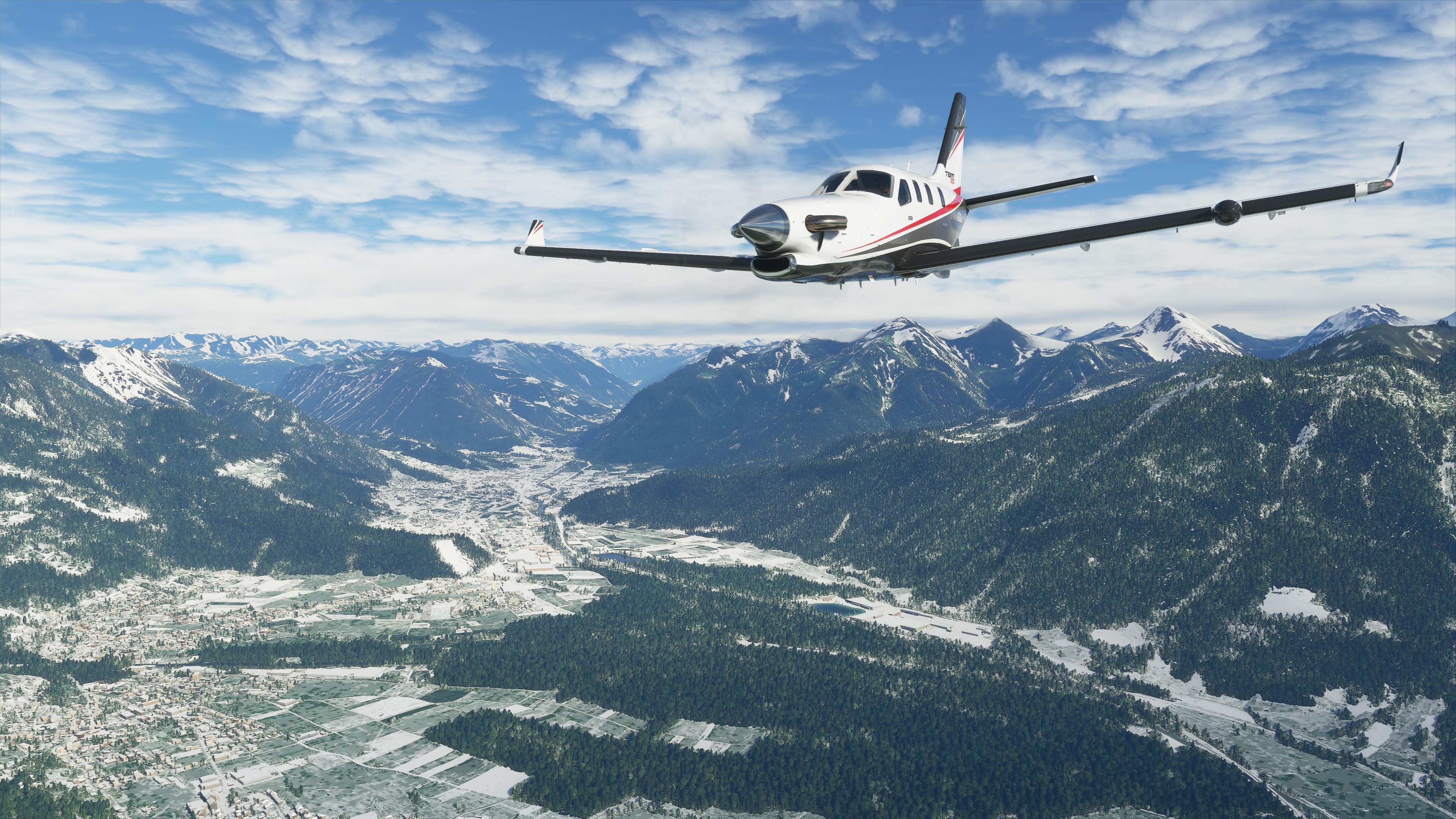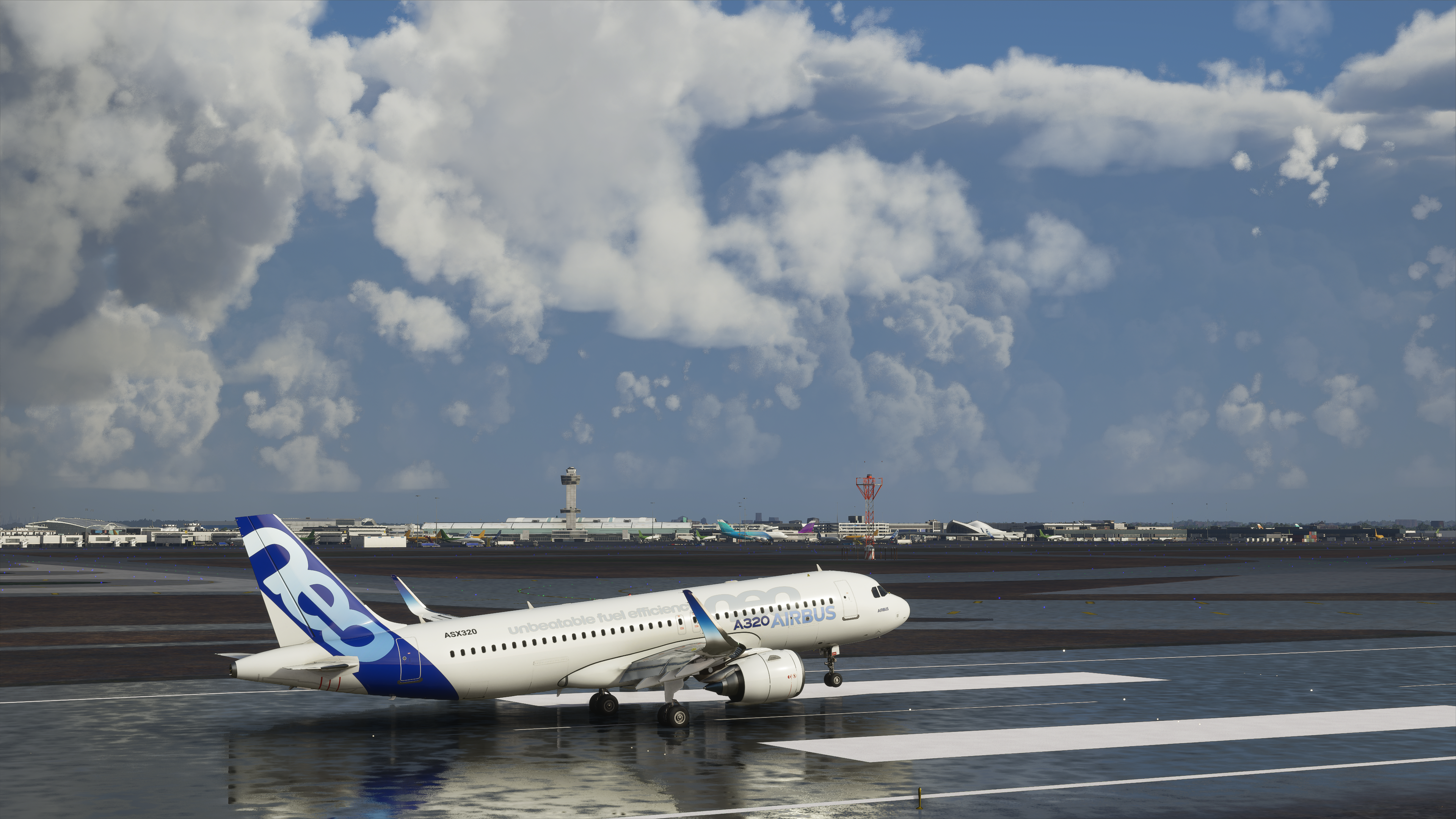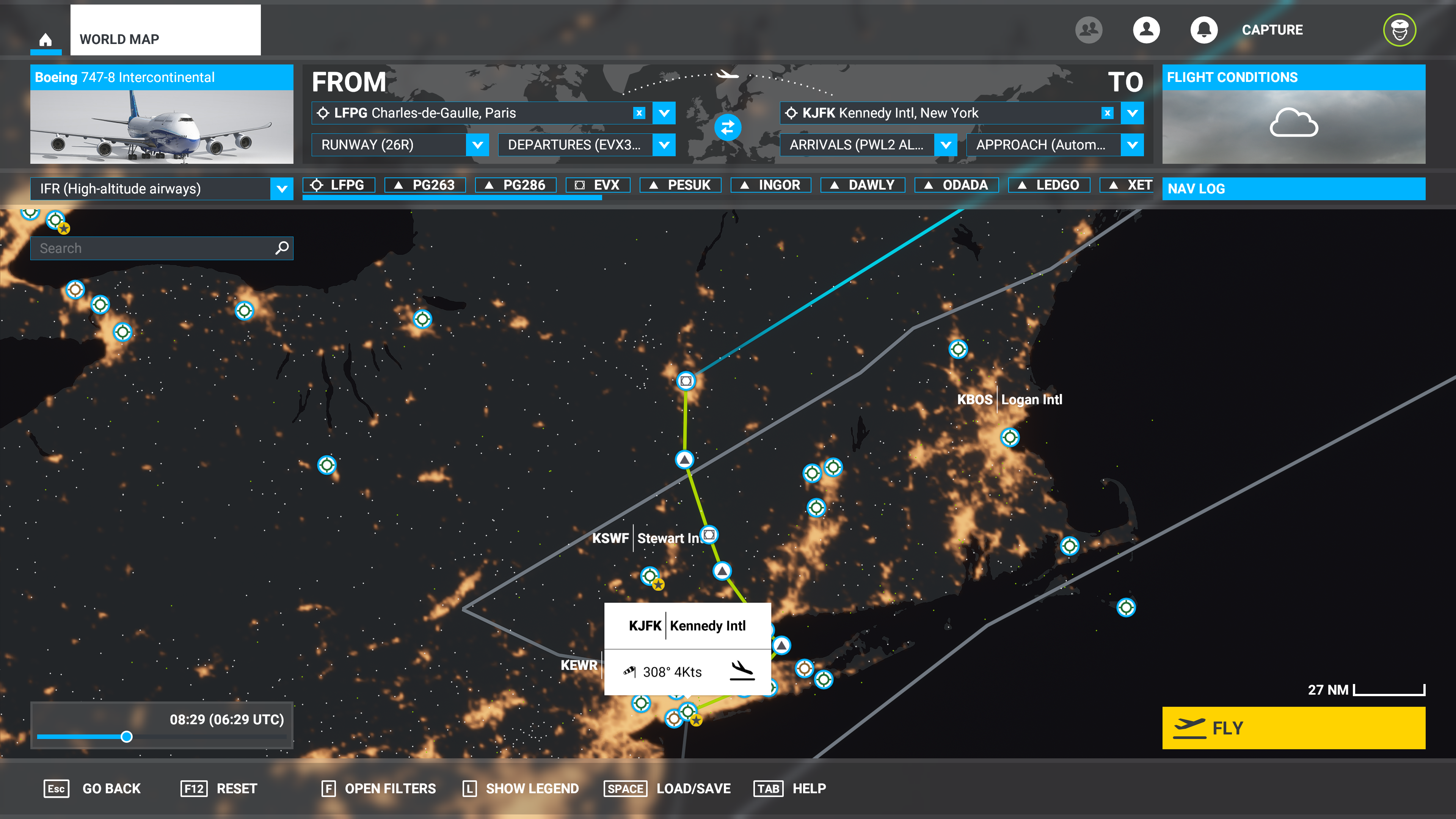Microsoft Flight Simulator is a time machine. Not only does it take me back to the glory days of flight sims, when a bookish civil aviation simulation from Microsoft was one of the biggest PC franchises in the world, but it also turns my gaming desktop—with its formerly unvanquished Nvidia 2080 Ti—into an old Pentium PC where the glories of Flight Simulator for Windows 95 unfolded like an interactive slide show whose long pauses were as nerve wracking as any aerobatics.
I forgot how especially taxing a real sim can be compared to modern action games. While Flight Simulator can be beautiful, it won’t dazzle you with the kind of bespoke, almost painterly landscapes you might find in games like War Thunder or Battlefield. It doesn’t aim for photo-realism, nor any kind of heightened aesthetic interpretation of reality. It doesn’t have a skybox. It has the sky. In a way it is the most literal fulfillment of Todd Howard’s infamous invitation to look at a distant mountain and realize you can actually go there. This freedom, however, is bought with long load-times, inconsistent framerates, and the occasional crash. I feel like a kid again.
Flight Simulator weds detailed aircraft simulation with real-world maps and data, using the satellite geography of Microsoft’s Bing to let you fly your aircraft of choice around a one-to-one re-creation of Earth. You can immediately put this to the test by using the game’s free flight mode, where you pick departure and destination airports on a world map, select your aircraft, and fly the route between them. I was shocked to find the game includes even the tiniest regional airfields I’ve ever visited, with what appear to be realistic air traffic patterns.

There are times the technological tricks undergirding this game work astonishingly well. The first thing I did after I finished the game’s lovely, hassle-free tutorials was try and find my home. I took off from Logan airport in Boston, flew north to the Merrimack river, and traced it west. The game was pulling live local time and weather, and so when I banked left near Lawrence, Massachusetts, I was greeted by a very similar sunset to the one I could see outside my window, glinting off the river below. I followed it for a few minutes until I spotted the UMass Lowell campus, then slowly cruised over the town until I spotted the spire of City Hall and the acres of old mill buildings and canals that surround it. It wasn’t perfect but it was, recognizably, home.
On the other hand, in a lot of places, Flight Simulator looks like exactly what you’d expect from a game built on satellite imagery: smears of flat, poorly differentiated terrain carved up by thin lines of road, or slamming into narrow strips of beach. More surprising is the way even well-known landmarks are sometimes mangled in the game’s rendering. Flight Simulator has a way of making every single city look like the end of Inception.
This is the type of stuff that jumps out at you when you start really looking for the seams in Flight Simulator’s world, cruising just a few hundred feet off the deck at seventy or eighty knots. It gets a lot more impressive once you stop worrying quite so much about what’s on the ground and enjoy the experience of being in the air. For my first trip in a twin-engine jet, a Cessna Citation Longitude (a plane that appears in the Premium edition of the game, for which Microsoft provided a key), I decided to take off from San Francisco International in the middle of a driving thunderstorm and it was harrowing and breathtaking in equal measure.

Used to prop-engine aircraft, I was floored by the way the jet engines sent me blasting down a foggy, slippery runway toward the Pacific. The plane generated so much lift that it was scary: one moment I was on the ground, then next the plane was soaring upwards at thousands of feet per minute while I’d barely pulled back on the stick. Suddenly a cockpit alarm began to chime and a computerized voice chanted “air-speed air-speed air-speed” at me as rain pelted the windows and I stared at the flat gray-red expanse of a storm cloud. A quick keystroke to zoom in on my instrument panel showed an ominous red bar next to my airspeed indicator as I went sailing past 300 knots and continued to climb. I eased forward on the throttle, cutting power to the engines and pulled the nose a little higher to gain more altitude and slow the plane. The alarm stopped as the speed bled off, and then a few minutes later I broke through the fog into an enormous canyon between flashing storm clouds and I finally realized why I’d had such a hard time keeping the plane level: now that I finally had visual references, I could see how hard the wind gusts were throwing the plane around as it fluttered north over the Golden Gate.
But let’s go back a second, because I had to reload in the middle of that flight. After adjusting my graphics settings down in the hope of getting a better framerate, my first trip into the wall of rain and thunder looked pretty underwhelming. The flashes of lightning threw weird artifacts across my screen, and once I got into clear air, the cloudscape was impressively dramatic but also a bit featureless. Yet my framerate wasn’t any better despite the obvious cuts to fidelity. So I cranked the settings back up to a mix of medium and medium-high settings and enjoyed the more dramatic, convincing rendition of heavy weather. This time, the game seemed to run pretty smoothly despite the sheer amount of action happening on the screen, from glimpses of a drenched San Francisco to an aerial mountain range of cumulonimbus clouds stretching for what fifty miles or more in every direction.
This has been a pattern throughout my weekend with Flight Simulator, and while I am sure the complexity of the simulation and expansiveness of its visuals is hard on my PC, it seems like the real performance issue revolves around loading. Somewhat ominously, the game features a decent set of tools to manage how much data it’s allowed to download and store locally: a tacit admission that the way this game works is liable to wreak havoc on anyone whose ISP employs data caps. But even if the amount of data the game wants to pull is not an issue, it certainly feels like it exerts a drag on the Flight Simulator’s performance.

Flight Simulator is at its worst when you’re trying to get airborne. The game takes ages to load (and be prepared, the first time you launch it, to download a massive 100 GB update) and that’s before you get anywhere near a plane. Then, once you’ve chosen what and where you want to fly, there’s a long delay as everything loads. But more often than not, once loading “finishes”, there’s still a performance hangover where I get massive hitches in my framerate and sudden spikes of input lag. Usually I don’t even touch the controls or camera for a couple minutes after a session loads, because jumping the gun will bring things to a screeching halt. A few minutes idling on the runway seems to cut the odds of an awkward pause in the middle of a take-off.
It’s far better and more consistent once the sim has been running for a few minutes, but still there are times when performance dips sharply for a few seconds, and then slowly returns to normal. Once I had a long flight end in a sudden crash to desktop as the runway came into view for my final approach.
I’m not entirely joking when I talk about my nostalgia for this kind of hit-or-miss experience. The Flight Simulator games were always surprisingly intensive despite their sometimes dry approach to their subject matter, and this new one seems to live up to that tradition, albeit in some slightly unexpected ways. The hurdle here seems to be somewhat less about PC hardware and more about how to get loads of data from Microsoft servers based on whatever civil aviation scenario strikes your fancy.
I don’t think Microsoft or developer Asobo are insensible to these issues. When you launch the game, the welcome message on the main menu talks a lot about how this is the start of a long journey that the team hopes will last for “years to come.” Flight Simulator presents itself as a work in progress. A lot depends on the nature of that remaining work. It’s a game whose potential is evident, but so are the hurdles to realizing all that potential.
from VICE US https://ift.tt/3axtajY
via cheap web hosting
No comments:
Post a Comment